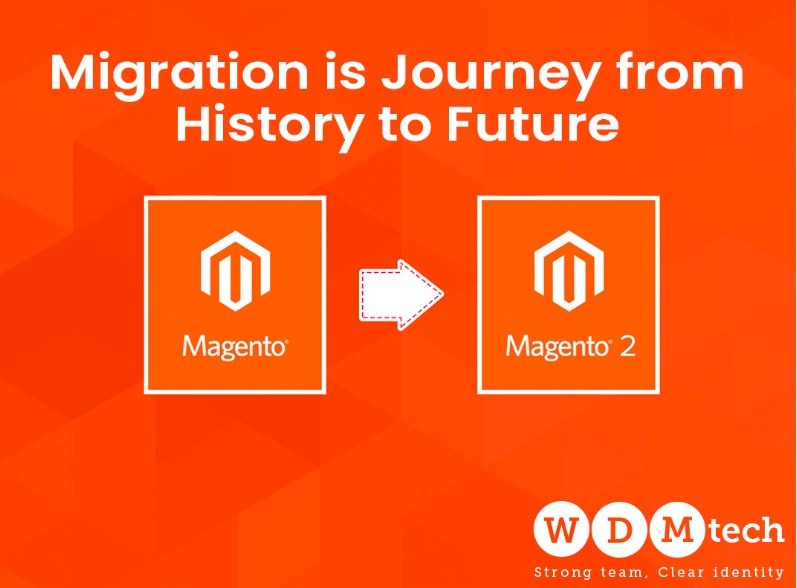There are numerous reasons to use the internet as a shopping hub. Both businesses and customers have the ultimate benefits to sell and shop through e-commerce. As the number of e-commerce businesses is rising at a steady pace, competition is undoubtedly going to be highly intensified in the coming years. Everything matters when it comes to leading the business to a higher level.
One needs to improve at every precise level to sustain an e-commerce business. At last, the ultimate goal is to reach the customers and make them buy services and products. Primary interaction and first impressions with the customers are the keys to impressing them and leaving a positive impact on their minds. This can be done only through the e-commerce website or application you are developing for your business.
Now, when it comes to developing an e-commerce store, anyone could be messed up with lots of platforms and CMS. Go through this blog and eradicate the confusion and compulsions to take a firm decision. One of the platforms with stylish and state-of-the-art e-commerce features fulfilling the demands of today’s generation is MAGENTO.
Magento is a new-fashioned platform that shoot-up your business to new heights. It was floated into the market on March 31, 2008, by Varien using the Zend framework. Few of the reasons why Magento is adapted widely are:
- Strong e-commerce segment with advanced features makes it a platform of choice for the most fortunate businesses around the globe. This leads the Magento platform to a much higher growth rate in comparison with the market.
- At its core, it addresses issues like user segmentation, security, customization, SEO behavior, speed, control, etc to improve the overall performance of a website.
- Whether in terms of growth in transaction values or considering the customer reach using this platform instead of competing platforms, Magento performs extra-ordinary.
Certain Facts about Magento:
- More than 5K extensions are available for Magento, many of them are free.
- More than 3.8K Magento developers are listed in Magento’s directory.
- According to google, the term “Magento” was searched more than the word “E-commerce”.
- Magento 2 can handle 10 million page views in an hour.
Since its launch, Magento is being updated continuously for the last 10 years. It all started with Magento 1.0 and then followed by Magento 1.1 to 1.9.x. On November 30, 2011, the next generation of Magento was launched named “Magento 2.0”. This is also followed by Magento 2.0.1 to 2.0.15 and 2.1.0 to 2.1.9.
Magento is kept evolving over the years, providing updates with additional features and bug fixes. On August 4, 2017, Magento 2.2.0 was launched and followed up by Magento 2.2.8 on March 26, 2019. The latest development brings out Magento 2.3.1 over version 2.3.0 which was launched on November 28, 2018.
Why use Magento 2 for your e-commerce?
Magento is here in 2020 with its latest version that gives a lot to the universality and extensibility of the platform. better UI, improved shopping experience, performance improvement, responsive theme, better code quality, and streamlined interface. We will discuss each and every aspect below in detail:
- Exceptional Performance:
The areas of improvement Magento covers in its latest version are that the amount of code is reduced, browser rendering is increased, for order processing separate database is introduced, Image compression is improved, and static content caching is used. Also, the query performance is immensely speedy through the improvement in Indexers. - Graceful design Improvements:
Admin user interface has been exclusively improved in Magento 2. It holds added safeguards that help multiple administrators to work on a single website simultaneously. This makes the team work more efficiently and helps update everything within no time for large stores having thousands of products. - Flexible Architecture with New Features:
Architecture improvements of a Magento include advanced security measures, a new framework library, the automatic testing framework being integrated, module management improvement, better API functionalities, and ease to upgrade. - CSS Pre-processing:
Instead of Bootstrap, Magento uses CSS and LESS in its theme core. To find and publish CSS files together, Magento has a publisher. This publisher supports pre-processing of files being published. Magento 2 helps to enhance performance, increase page loading speed and make a page more SEO friendly using LESS pre-processor and CSS URL resolver. - Improved Customer Experience:
The checkout process has now become much speedy, transparent, and Zip code friendly. PayPal integration has been improved in Magento 2. The registration process is much more simplified with only email address verification. Also, the checkout page executes shipping rate calculations in a speedy way without loading excessive JavaScript.
Five famous websites on Magento 2:
Land Rover: https://www.landrover.in
Cox and Cox: https://www.coxandcox.co.uk
Timex: https://www.timex.com
Sigma Beauty: https://www.sigmabeauty.com
Cultcha Kids: https://www.cultchakids.com.au
It is recommended for start-ups to have an e-commerce store on Magento 2. Also, businesses using Magento 1 platform are advised to migrate to Magento 2. For the migration process, you need a professional service provider. WDMTech is one of the known brands providing services to develop Magento-based e-commerce solutions. WDMTech has a smooth, agile, and effective procedure to migrate any version of Magento to Magento 2. More information can be checked by visiting the link www.wdmtech.com.









